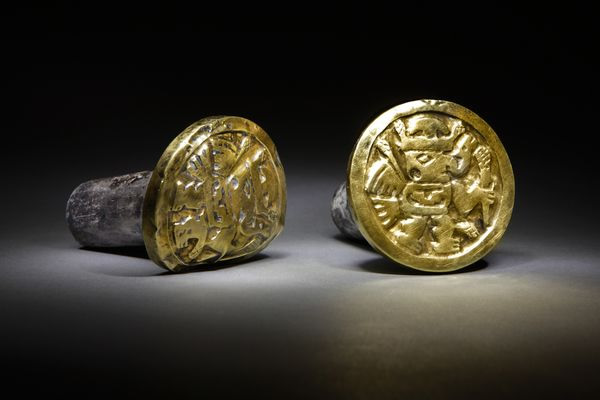
We're back ...
| 1415 | Jan Hus, a Czech who spoke out against Church corruption, is burned at the stake as a heretic. | |
| 1519 | Charles of Spain is elected Holy Roman emperor in Barcelona. | |
| 1535 | Sir Thomas More is beheaded in England for refusing to swear allegiance to King Henry VIII as head of the Church. | |
| 1536 | Jaques Cartier returns to France after discovering the St. Lawrence River in Canada. | |
| 1685 | James II defeats James, the Duke of Monmouth, at the Battle of Sedgemoor, the last major battle to be fought on English soil. | |
| 1770 | The entire Ottoman fleet is destroyed by the Russians at the battle of Cesme. | |
| 1788 | 10,000 troops are called out in Paris as unrest mounts in the poorer districts over poverty and lack of food. | |
| 1836 | French General Thomas Bugeaud defeats Abd al-Kader's forces beside the Sikkak River in Algeria. | |
| 1835 | John Marshall, the third chief justice of the Supreme Court, dies at the age of 79. Two days later, while tolling in his honor in Philadelphia, the Liberty Bell cracks. | |
| 1854 | The Republican Party is officially organized in Jackson, Michigan. | |
| 1885 | Louis Pasteur gives the first successful anti-rabies innoculation. | |
| 1944 | Lieutenant Jackie Robinson of the U.S. Army, while riding a civilian bus from Camp Hoo, Texas, refuses to give up his seat to a white man. | |
| 1945 | B-29 Superfortress bombers attack Honshu, Japan, using new fire-bombing techniques. | |
| 1945 | Operation Overcast begins in Europe–moving Austrian and German scientists and their equipment to the United States. | |
| 1982 | President Ronald Reagan agrees to contribute U.S. troops to the peacekeeping unit in Beruit. |


 Samuel
Nobile de Oliveira of Juína is paralyzed. He visits the local public
health building in Brazil for medical care. But because it lacks a
wheelchair ramp, doctors have to come outside to meet with him. Local
government officials wouldn't build a ramp, so on Monday, Oliveira
showed up with wood, stone, cement and the determination to build one
himself.
Samuel
Nobile de Oliveira of Juína is paralyzed. He visits the local public
health building in Brazil for medical care. But because it lacks a
wheelchair ramp, doctors have to come outside to meet with him. Local
government officials wouldn't build a ramp, so on Monday, Oliveira
showed up with wood, stone, cement and the determination to build one
himself.… take tangible employment actions against the victim, i.e., to effect a “significant change in employment status, such as hiring, firing, failing to promote, reassignment with significantly different responsibilities, or a decision causing a significant change in benefits.”Although she sometimes directed Vance’s activities, Davis did not have authority to take those “tangible employment actions.” Thus she was not Vance’s “supervisor,” the Court held, and Ball State would only be liable for discrimination if they were negligent: knew or should have known, and failed to take remedial action.

"Nobody has ever been denied the right to get married. Not a single person."Audio here Even worse, Dimbulb's ludicrous claim came AFTER the caller attempted to explain something about the history of bans on interracial marriage in the United States:
CALLER: ...miscegenation laws back in the fifties and sixties... I'm sure a lot of people were in favor of that, too, but it was wrong. It was wrong then; it's wrong now.
LUSH: The what laws back in the fifties and sixties?Had Dimbulb been paying attention in school, he would have learned about Loving v. State of Virginia, the 1967 Supreme Court case that overturned bans on interracial marriage. But, then again, El Lushbo has never been big on accuracy and truth.
CALLER: Miscegenation.
LUSH: Miscegenation laws?
CALLER: Yeah, miscegenation. It's when white and blacks couldn't marry. It was the law in 26 states.
The bill, called the we are watching you act of 2013, would prohibit video service operators from collecting visual or audio data from the vicinity of the device without express permission from the consumer. tor viewers that opt in, the monitoring company would have to display a "we are watching you" message on the screen and provide to the consumer what types of information is being collected and how it will be used.
While such big brother TV monitoring hasn't yet been deployed, Verizon last year filed a patent for monitoring technology that would use infrared cameras and microphones to track and collect consumer behavior in the vicinity of a TV or mobile device. according to the patent application, the technology could detect ambient action, like people eating, exercising, reading, sleeping and more.
"This may sound preposterous but it's neither a joke nor an exaggeration," capuano said in a statement. "these dvrs would essentially observe consumers as they watch television as a way to super-target ads. it is an incredible invasion of privacy." - More



 |
| Ancient Maya pyramids tower above the forest at Tikal, Guatemala [Credit: BYU] |
 |
| BYU soil scientists work at the ancient Maya location near Tikal, Guatemala [Credit: BYU] |
 |
| Ancient Maya pyramid at Tikal, Guatemala [Credit: BYU] |
 |
| BYU soil scientist Richard Terry works in the forest canpy at the ancient Maya location near Tikal, Guatemala [Credit: BYU] |

Tomb robbers had long dumped rubble on the ridge. Digging through the rubble last September, Giersz and his team uncovered an ancient ceremonial room with a stone throne. Below this lay a large mysterious chamber sealed with 30 tons of loose stone fill. Giersz decided to keep digging. Inside the fill was a huge carved wooden mace. "It was a tomb marker," says Giersz, "and we knew then that we had the main mausoleum." [...]National Geographic Daily News has the scoop: Here.
As the archaeologists carefully removed the fill, they discovered rows of human bodies buried in a seated position and wrapped in poorly preserved textiles. Nearby, in three small side chambers, were the remains of three Wari queens and many of their prized possessions, including weaving tools made of gold. "So what were these first ladies doing at the imperial court? They were weaving cloth with gold instruments," says Makowski.

 |
| The 520-million year old fossilized creature that is one of the earliest known echinoderms with fivefold symmetry [Credit: Andrew Smith, Proc. Royal Soc. B] |
 |
| Artist's reconstruction of the Helcocystis moroccoensis flourished [Credit: Andrew Smith] |
 |
| Reconstruction of the Late Miocene habitat of Aceratherium piriyai at Tha Chang [Credit: Chen Yu] |
 |
| Holotype skull of Aceratherium piriyai sp. nov. [Credit: IVPP] |
 |
| Location and section of Tha Chang in Nakhon Ratchasima Province, northeastern Thailand [Credit: IVPP] |

The cottontail rabbit papilloma virus (CRPV), or Shope papilloma virus, is a type I virus under the Baltimore scheme, possessing a nonsegmented dsDNA genome. It infects rabbits, causing keratinous carcinomas, typically on or near the animal’s head. These tumors can become large enough that they interfere with the host’s ability to eat, eventually causing starvation.The Wikipedia entry adds:
The virus is also a possible source of myths about the jackalope, a rabbit with the antlers
of an antelope, and related cryptids such as the wolpertinger. Stories and illustrations of horned rabbits appear in scientific treatises dating back many years, such as the Tableau encyclopédique et méthodique, from 1789 [image at right]